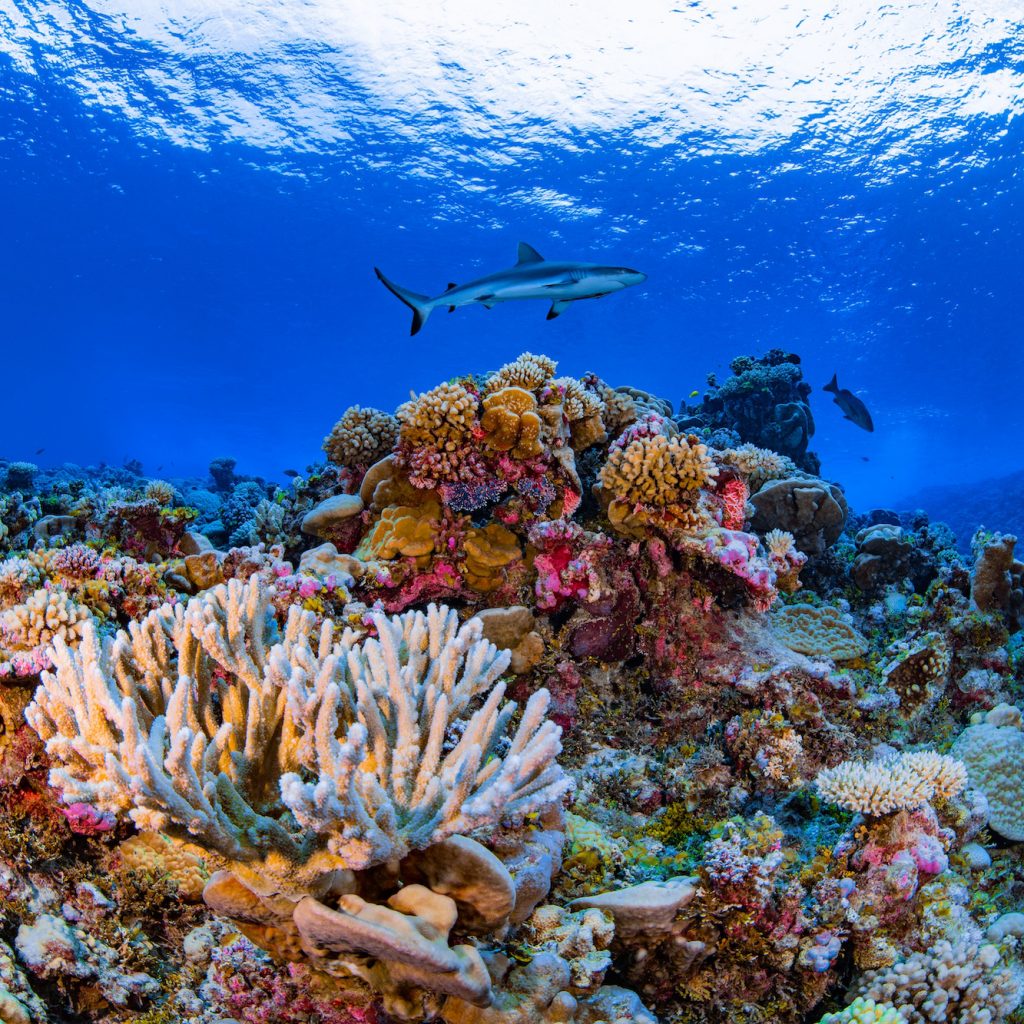Link About It: Earth Day 2017 Edition
Some fascinating, recent news about our beautiful planet


1. 3D-Printed Coral Could Save Our Endangered Reefs
Jacques Cousteau’s grandson Fabien Cousteau believes that synthetic, 3D-printed coral might be the thing to save our endangered reefs. According to CNET, “In nature, coral reefs are made up of calcium carbonate skeletons where tiny organisms called polyps take root” and these polyps grow their own reefs too—but only at one centimeter per year. That isn’t fast enough to keep up. Cousteau’s belief (or hope) is that 3D-printed calcium carbonate skeletons will encourage growth just like the real deal. The Fabien Cousteau Ocean Learning Center has already started experimenting with the clever coral.
2. Scientists Have Found Evidence of a Lost Continent of Mauritia
The lost continent of Mauritia is believed to have been pulled apart by geological forces and sunk to the bottom of the sea long, long ago and scientists have just found evidence that might prove that theory. When studying volcanic rocks on the island of Mauritius, scientists found some with zircon crystals embedded in them. The remarkable thing here is that the crystals are some two billion years old, while Mauritius is just nine million years old—meaning there’s a much more ancient layer of earth under what we know as Mauritius. Read more at Popular Science.
3. Identifying Trees by Sound
In his poetic, informative new book “The Song of Trees,” natural history writer David George Haskell describes his experiences lending binaural attention to trees. As The Atlantic describes, Haskell “visits a dozen specially chosen trees, including: a pear tree in the heart of Manhattan; an olive tree in Jerusalem; a sabal palm, roughing the salt and sun of a Georgian beach; a towering, rain-drenched ceibo in Ecuador; and a bonsai pine that survived the Hiroshima bombing and now lives in Washington, D.C.” Here, the author harvests sound and observations, while defining trees as connectors—little networks, with memories. You can learn more over at The Atlantic or pick up the book, out now on Viking.
4. Urinals Encourage Public Peeing in Paris
There’s no stopping public urinators, and now the city of Paris has (like many other places) decided to support the act—but with a beneficial outcome. Now with the Uritrottoir (which translates to “sidewalk urinal”) people can pee on the street and help public gardens grow. Each Uritrottoir has two sections: on the top is a window-box-style garden, and on the bottom is a layer of compost. Those who use the urinal not only help to create fertilizer, but also lessen the stench on the street. From industrial design studio Faltazi, this creation is a very clever solution to a frequent problem.

5. The Haunting Sounds of Icebergs
Only 20 years ago the scientific community had no idea that icebergs made noise. After the last remaining chunk of the largest iceberg ever (twice the size of Delaware) began to fall apart, sounds were heard up to thousands of miles away. In fact, the ocean was documented as being much noisier as a whole. Through data analysis, scientists were able to trace the sounds back to the iceberg (and another, also melting). As more information became available (and military data became declassified) a whole range of sounds have been attributed to icebergs, from bloops to clanks, groaning and grinding (against the sea floor). Of great importance, these sounds might be able to help scientists better understand what can be expected of icebergs in the midst of climate change. Learn more at Atlas Obscura.
6. “Plan Bee” Drone Pollinators
The impact of our global bee population is undeniable—from pollinating crops and wildflowers to producing honey. To draw awareness to the current bee crisis, industrial designer Anna Haldewag has imagined an alternative and produced a prototype. The “Plan Bee” is a self-sustaining drone, mimicking the shape of a flower and the color patterns of a bee. It’s able to pull pollen up from one flower and disperse it on another—a camera on its underside alerts the device of flowers. This is a new cross-pollination system that could prove quite effective, but again, we must do everything in our power to preserve the honeybee while it’s still possible.
7. An Entire House 3D-Printed in One Day
A quick, affordable solution to escalating housing construction costs, Apis Cor’s 3D-printing system actually prints an entire small home out of concrete in under 24 hours. The SF-based start-up recently tested the process in Russia, delivering a 400-square-foot house. Of course, not all of it can be done through 3D-printing, and contractors finalize the structure by installing insulation, a roof, windows and a door—the latter two items being the most expensive. All-in-all this type of home costs about $10K. Structures like these can easily be useful in cities coping with a housing crises, uncontrollable cost increases or even areas afflicted with damages from a natural disaster.
8. Photographing the Planet Every Day From 143 Satellites
San Francisco-based start-up Planet just launched 88 small satellites in a record-breaking take-off from India (among a total of 103 satellites on a PSLV rocket). If all goes according to plan, Planet will begin photographing Earth every single day from their entire roster of 143 satellites, which move north to south scanning the globe. This would position Planet as the premiere provider of satellite image data. Their depth of information will also include historic date from US Landsat satellites and European Sentinel satellites, building an unparalleled glimpse at our the Earth’s developments.
Link About It is our filtered look at the web, shared daily in Link and on social media, and rounded up every Saturday morning.












